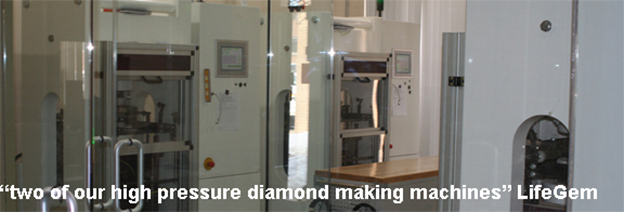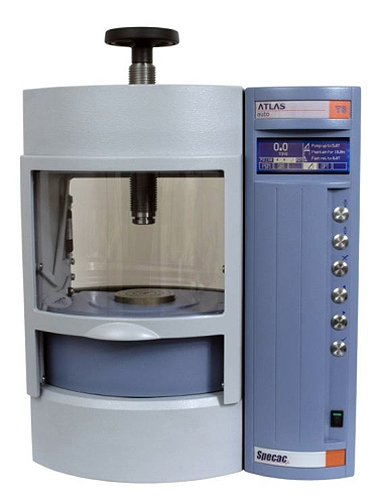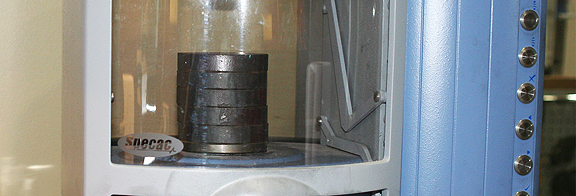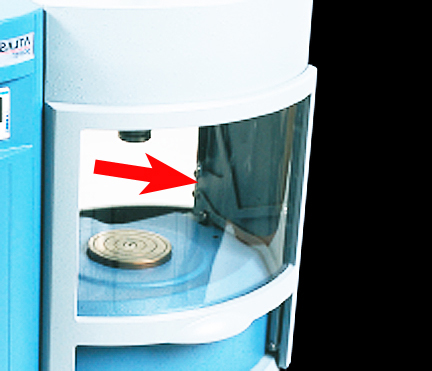Cremation Diamond Fraud Report
Introduction
The Cremation or Memorial Diamond industry began in 2002 when the process of growing diamond crystals in a laboratory environment was perfected. Using a process known as high temperature – high pressure (HPHT) method of crystal growth the conditions that exist deep inside the earth can be duplicated in a laboratory, allowing for the formation of diamond crystals, a crystallized form of pure carbon.
With the advent of this technology, companies begun to form who claimed to take carbon from the cremated ashes of deceased persons and use that carbon to create lab grown diamonds. The concept is currently being put forth by one of the cremation diamond websites, Eterneva.com when they urge customers: Keep their legacy alive. Turn their ashes into a cremation diamond.”
Over the past decade the cremation diamond market has grown to world-wide reach with companies such as LifeGem®, Lonite™, Phoenix Diamonds™, Cremation Solutions™ and Algordanza™ among the leading names.
Currently, the cremation diamond industry operates with no government oversight or review, and without any type of formal control regarding the claims being made regarding the actual creation of diamonds using carbon obtained from cremation ashes.
Purpose and Scope of This Investigation
This investigation began in 2007 when consumers approached my office with questions about the validity of claims being made by the cremation diamond companies. At first issue was that the cremation diamond companies were quite secretive about their operations and processes. The second issue was the extremely high price of cremation diamonds due to these company’s refusal to divulge information about their processes based on claims of proprietary information”. Finally, was the very basic question of whether cremated ashes contained enough carbon to make a diamond, and how much carbon from the deceased person’s cremated ashes was used to create the diamond.
It is, therefore, the purpose of this investigation to answer these three questions:
- How much carbon remains after the cremation process, and how much of that carbon can be expected to exist in a created diamond?
- What is the price comparison of open market lab created diamonds to those reportedly produced by the cremation diamond companies?
- Are the promotional claims by the cremation diamond companies verifiable to a reasonable degree that should allow consumers to have confidence in these claims?
We will take these questions in order.
Question #1. How Much Carbon Exists in Cremated Ashes?
There are important issues that must be addressed when answering this question: How much carbon exists in the human body, and at what rate is that carbon lost during the cremation process.
What are diamonds?
Diamonds are pure, crystallized carbon. While they may be in crystal form, they contain the same ingredient as graphite or charcoal: Carbon.
How much carbon in the human body?
Carbon is a main ingredient in the human body, making up approximately 18% of the total weight of the human body. It is this carbon that the cremation diamond companies claim is used to create the memorial diamonds.
At what temperature does carbon burn?
Carbon burns at 1405 degrees F. Anyone who has used charcoal for a cooking fire has seen the process take place as the charcoal burns all the carbon, leaving nothing but ashes with no more carbon to burn. During house fires, it is often seen that gemstones from jewelry can be recovered intact because most gemstones are not damaged at temperatures reached by most house fires. The one exception is diamonds. Since many house fires can reach temperatures more than 1600 degrees F, diamonds in jewelry burn and disappear while other gemstones remain intact. This is, once again, due to the low burn temperature of carbon.
What is the Temperature of a Cremation Furnace?
Cremation furnaces operate in a temperature range of 1600F to 1800F, to insure a complete cremation of all aspects of the human body. The result is a complete burn out of any element with a burn temperature below 1600F, including carbon. To quote one cremation company:
“The cremation process destroys all traces of organic, carbon-based matter” CremationSolutions.com
The entire investigation could end here as the cremation process destroys all traces of carbon-based matter” and leaves no residual carbon with which to create a diamond. There is no carbon left in the cremation ashes to make a diamond, a fact that renders all cremation diamonds as impossible to create.
Further investigation, however, reveals that the cremation diamond companies, such as LifeGem® are aware of this fact.
It must be stressed that the following is taken directly from the United States Patents filed by the owners of LifeGem:
United States Patent Application 20030017932
VandenBiesen, Russell P. ; et al.
January 23, 2003
United States Patent Application 20040031434
VandenBiesen, Russell P. ; et al.
February 19, 2004
These patents contained in these LifeGem owner patents reveal that these companies are aware that the cremation process destroys the available carbon in a human body. In fact, the only methods to obtain enough carbon from the cremation process is a (a) only do a partial cremation or (b) add outside carbon from other sources to the ashes.
The following quotes are taken directly from the patents of LifeGem owners, and demonstrates LifeGem’s awareness that there is not enough carbon in cremated ashes to create a diamond. Quotes from the Patent are in bold.
“…. conventional cremation eliminates most of the native carbon,….” LifeGem
LifeGem admits that the cremation process eliminates carbon. They offer two methods to maintain carbon. The first is partial cremation:
“The preferred process for collection begins with the oven operator positioning the body in the oven so that the head and chest area are not positioned directly underneath the main burner.” LifeGem
LifeGem suggests the body not be totally cremated. They state further:
“Positioning the body in this manner assures that carbon will remain in the body’s head area. The carbon can then be gathered by hand, or by using a metal shovel or scoop, or the like.” LifeGem
Further, they blatantly recommend that only certain body parts be cremated:
“Alternatively, one or more body parts may be cremated.” LifeGem
There can be little doubt that LifeGem is aware that the cremation process does not leave enough carbon to create a diamond, otherwise they would not be recommending such drastic measures such as only cremating certain body parts, and/or moving the head from over the furnace and retrieving it afterwards with a shovel.
The other alternative is simple: If there is no carbon, use carbon from outside sources to make the memorial diamond:
…the remains can be cremated conventionally, mixed with additional carbon from another source, and purified as described above. It is contemplated that, using this technique, a gem containing at least some of the original carbon from the cremated remains can be prepared, even if the amount of carbon present in the remains alone is insufficient to make a gemstone of desired size or type.” LifeGem
IMPORTANT! I believe the above method is how LifeGem operates. After contacting many crematoriums, I did not find a single company willing to do a partial cremation as LifeGem Suggests.
Based on this, LifeGem, and most likely all cremation diamond companies, fully realize that carbon is lost during the cremation process, and that outside carbon must be added to the ashes before any effort to create a diamond could be successful.
The important issue in the above statement from LifeGem is that they contemplate” or think there is at least some of the original carbon” is included in the diamond. They think.
Simply stated: LifeGem cannot guarantee that ANY carbon from the deceased loved one’s body is included in their cremation diamonds.
Question #1 Conclusion
There is no question that cremated ashes contain no carbon since the burn temperature of a cremation furnace is far above the burn temperature of carbon. Even the cremation companies admit that all carbon is eliminated” during the cremation process.
There is also no question that the cremation diamond companies are aware of this fact, as demonstrated by the alternative solutions put forth by LifeGem in their US Patents.
Clearly, this single point brings all cremations diamond companies into question regarding their claims because only two alternatives are available to the cremation diamond companies:
- Only cremate parts of the body and extract carbon from non-cremated parts, or
- Mix outside carbon into the ashes since the ashes contain no carbon from the original body.
Since no crematorium will perform the tasks required for #1, the only alternative possible is #2. The problem is that answer #2 eliminates all the claims by these companies since they cannot guarantee any of the loved one’s carbon is in the cremation or memorial diamond.
The investigation could end here, but we still have more questions. Next is regarding the price of cremation diamonds as compared to other lab created diamonds. Since the diamond companies cannot guarantee any of the loved one’s carbon is in the finished diamond, how do the prices compare to other created diamonds?
Part 2
In Part 1 we revealed that carbon burns at 1405 degrees F, while cremation furnaces burn at temperatures between 1600F and 1800F. The result is, by the cremation industry’s own admission, “destroys all traces of organic, carbon-based matter”. More facts about the lack of carbon in cremation ashes is contained in the follow up report: Investigation of Claims by Eterneva Ashes to Diamonds on this website.
We also looked at the patents of one of the leading cremation diamond companies, LifeGem®, where they acknowledges the problem of the loss of carbon in the cremation process and suggested that the body only be partially cremated and the head and other parts be recovered with a shovel to obtain carbon, or outside carbon, not from the loved-one’s body, be added to the ashes so that a diamond could be made from that carbon instead.
While the investigation could have ended there, questions still exist. Today we look at what consumers are paying to the cremation diamond companies as a result of their marketing efforts in conjunction with the funeral industry. We continue with…
Question #2. What is the price comparison of open-market, lab-created diamonds to those reportedly produced and sold by the cremation diamond companies?
The cremation diamond companies have a well-organized marketing effort that tugs at the hearts of those who have recently lost loved ones. The cremation diamond companies, and their funeral industry cohorts, know they have a captive audience at the most vulnerable times in their lives….the loss of a dear loved on. The cremation diamond companies, and the funeral home industry, play on that vulnerability to maximize profitability. Here are some of the claims the cremation diamond companys make to vulnerable consumers:
Keep their legacy alive. Turn their ashes into a cremation diamond. Eterneva.com.
If you desire an everlasting connection to the one you have lost, a LifeGem® is right for you. LifeGem.com
The Memorial Diamond is a symbol of love, closeness and remembrance. Algordanza.com/en
Clearly the core customer base of the cremation diamond market are grief-stricken people trying to cope with the loss of a cherish loved-one, and the cremation diamond industry has learned to utilize the huge marketing potential of the funeral home industry to ply their hoax claims.
Funeral Home Industry Complicity in the Hoax
The cremation diamond companies utilize thousands of funeral homes around the world to do their marketing, in conjunction with their websites. LifeGem alone reports 3500 “ partners” in the United States and over 5000 world-wide. These are mostly funeral homes who can reach directly to the potential cremation diamond customer at their most vulnerable moments. Given the heinous nature of this whole market, it must be noted that the funeral home industry must also be held accountable for the very grievous situation. The above numbers are for one company. Others such as Algordanza are believed to dwarf the LifeGem operation world-wide.
Given the fact that the cremation diamond companies cannot guarantee their diamonds contain any of the loved one’s carbon, the question is raised regarding why the extremely high price of these diamonds? Since these are HPHT lab grown diamonds, how does the cost of grief affect the price of the claimed cremation diamond? The answer is bothersome.
Below is a basic comparison of diamonds from various cremation diamond companies, and those offered by one of the world’s leading providers of lab created diamonds: Brilliant Earth.
For this comparison I have used an average clarity and color for colorless diamonds. The company offering open-market, lab-created diamonds is Brilliant Earth. These diamonds are sold online by one of the leading lab-created diamonds companies. Please keep in mind that these are all lab created diamonds of comparable sizes and qualities, the only difference is a false guarantee of cremation diamonds being composed of a loved one’s ashes.
.30ct Round Colorless Diamond Average VS/G
Brilliant Earth Created Diamond: $445.00
LifeGem Cremation Diamond: $4,499.00
Eterneva Cremation Diamond: $4,499.00
Lonite Cremation Diamond: $3,400.00
.50ct round colorless diamond Average VS/G
Brilliant Earth Created Diamond: $850.00
LifeGem Cremation Diamond: $7,899.00
Heart in Diamond Cremation Diamond: $5,995.00
Phoenix Cremation Diamond: $8,695.00
Lonite Cremation Diamond: $5,300.00
.70ct round colorless diamond Average VS/G
Brilliant Earth Created Diamond: $1,440.00
LifeGem Cremation Diamond: $13,199.00
Eterneva Cremation Diamond: $13,199.00
Lonite Cremation Diamond: $9,100.00
It is clear that the cremation diamond companies use the grief factor to extract huge profits from the vulnerable customer base. On average, cremation diamonds cost up to 10 times more than the price of an open-sourced, lab-created diamond of the same size, quality, color and cut.
Conclusion to # Question 2
Given the fact that carbon burns at temperatures far lower than the burn temperatures of cremation furnaces causing all carbon to be consumed, the cremation diamond companies cannot guarantee any of the loved one’s carbon is in the cremation diamond. Based on this fact, it is difficult to justify this 10x price increase for any reason other than extracting extreme profits from highly vulnerable customers at the most difficult time of their lives.
Customers around the world are paying up to 10 times more than the normal price for a promise amd representation that the cremation diamond companies cannot guarantee.
But what about the claims being made by companies such as LifeGem regarding their tours of their diamond producing presses. Are these claims based on facts or P. T. Barnum-like smoke and mirrors?
This brings us to:
Question #3: Are the promotional claims by the cremation diamond companies verifiable to a reasonable degree that should allow consumers to have confidence in these claims?
Part 3
Question #3. Are the promotional claims by the cremation diamond companies verifiable to a reasonable degree that should allow consumers to have confidence in these claims?
This is where the investigation turned sinister. It is one thing for the cremation diamond companies to make claims they cannot guarantee as accurate, it is another for the cremation diamond companies to make false claims that they know are false. A quick review reveals that the cremation diamond companies have a long history of making false claims.
Below is an image taken directly from the LifeGem website in 2007. Notice that it specifically states:
“Here is one row of twenty LifeGem diamond presses, each creating a single unique LifeGem diamond.” LifeGem website 2007
The problem is that this image was in the public domain on the internet, taken many years prior to the LifeGem company formation.. LifeGem never owned the diamond making presses in this picture, and this was a false and, in my opinion, malicious misrepresentation to entice consumers to buy a LifeGem under false pretenses.

Here is a smaller version of the same image, but this time offered on a competing cremation diamond company’s website. Both LifeGem and the second company claimed these were their diamond making presses, when these are not even diamond making presses and both took the image from others.

This situation from 2007 demonstrates the propensity of the cremation diamond companies to use false representations in their promotional claims and websites. In the case of LifeGem this propensity has grown to huge proportions in their current website claims. The facts will be disturbing to those who have recently purchased LifeGem but must be recognized as part of this investigation.
Disturbing Current Misrepresentations in the Cremation Diamond Industry
Over the past few days I have reviewed the information on the cremation diamond company’s websites and what I found can only be described as criminal, in my opinion. The gross misrepresentation of facts, lies to consumers and disregard for ethics is rampant in the cremation diamond industry. What I am about to show you will sadden some as it goes to the very heart of the issue that cremation diamonds are a hoax, and the evidence below proves that point.
Before we begin, I want to show you what an authentic HPHT diamond making press looks like below.

For the purpose of educational purposes, I utilize these images from the QM Diamond company on alibaba.com. Notice the size and shape of the press below. It is created to bring the extremely high pressure and high temperature required to duplicate the conditions approximately 150 km deep inside the earth.

Again from the QMDiamond folks listings on alibaba.com, we find a demonstration of a partially assembled diamond making press. The red arrow I have placed on the image to show exactly where the diamond making point is in this press. It requires a massive amount of pressure and heat to force carbon to crystalize. Stop for a minute and look at this image, be sure and consider the size of the man standing in the background to this enormous diamond making press.

Now, look below at what LifeGem says is their diamond making press that does the same thing as the one you see below.
“Two of our high pressure diamond making machines” is how these units are described by LifeGem in their website. But what are they really?

What are we really seeing in the LifeGem lab?

Here you are looking at an Atlas model Electric Hydraulic Pellet Press made by the Specac™ company. This press is used to press materials into small pellets for preparation as study specimens with FT-IR, XRF and other lab testing.
At no point in the company’s materials is this unit sold as a diamond making press. In fact, my research into the use of this press specifically precludes the ability to make a diamond.
But….this is the press you are looking at in the image above, dressed up nicely, I have concluded, to make LifeGem customers believe that LifeGem has diamond making presses.
Let’s compare some features to further demonstrate this situation.
Below is a photo direct from the LifeGem website where they tout this press can produce 8 tons of pressure. The rated pressure of this pellet press happens to indeed be 8 tons. However, it requires over 360 tons of pressure to make a diamond using the HPHT presses you saw above. But wait, there’s more…. Look at the control buttons.

The control panel to the Specac Atlas Pellet Press is identical to the claimed LifeGem diamond making press. But the comparison does not stop there.

Looking inside the image of the Specac Pellet Press, we see this armature structure you see at the red arrow at left.


Not that we have to prove this one any further, but look below inside the claimed LifeGem diamond making press.

Same armature structure and for the record, the Specac logo on the window. Which pretty much put the last nail in the coffin on LifeGem’s claims that these are diamond making presses.
You must remember, LifeGem brings people into their warehouse and walks them through these machines to falsely represent to greiving family members that these presses are used to create authentic cremation diamonds.
It is my conclusion that LifeGem is knowingly and maliciously perpetrating false information on consumers in order to induce them to make a buying decision based on this false information.

What about other companies
Most of the cremation diamond companies either use images from the internet in their promotional pieces, or create images of sad loved’s one’s made happy by a cremation diamond without disclosing any information on their actual operation. As a result I do not have prima facie evidence as I found with LifeGem. However, given the first fact that carbon is totally consumed in the cremation process, that alone makes all other issues secondary and potentially moot. EXCEPT for the fact that I believe LifeGem is making false representations to consumers regarding the ability of their clearly shown Specac Pellet Presses to make diamonds.
Final Conclusion
Based on the evidence presented, I believe that no conclusion is possible except that cremation diamonds are a hoax. A nasty, sinister hoax being willfully perprated on bereaved loved one’s at their most vulnerable time. What I find even more despicable about this situation is that the funeral home industry is totally complicit in the hoax and is profiting from each and every cremation diamond they sell for the cremation diamond companies.
Where is the Federal Trade Commission? Where is the Jewelers Vigilance Committee? Where is the jewelry industry media? I cannot answer any of those questions. I have my opinions but those are best left out of this investigation. Suffic it to simply say that it appears to me that the FTC either does not know or has not had enough complaints, and the JVC is most likely out having cocktails while the industry burns down around them. Well, I guess I said it anyway. But someone has to.
Bottom line: Cremation Diamonds are a Hoax based on all evidence I have gathered in this investigation.
If any of them would like to prove otherwise, my door is always open.
Robert James FGA, GG
Global Claims Associates Independent Insurance Adjusters and SIU Investigations
Texas Department of Insurance Property and Casualty Adjuster License #1300433